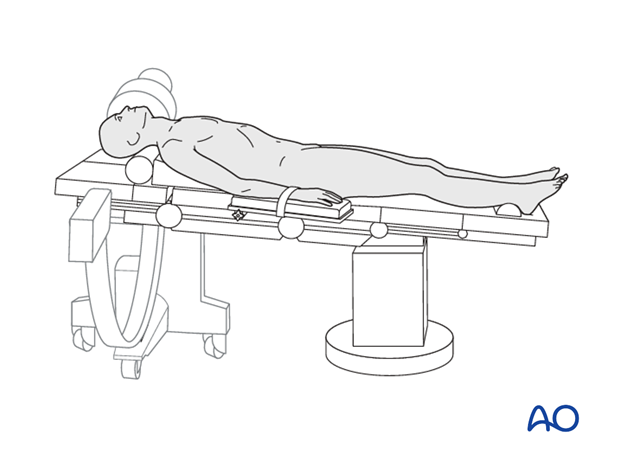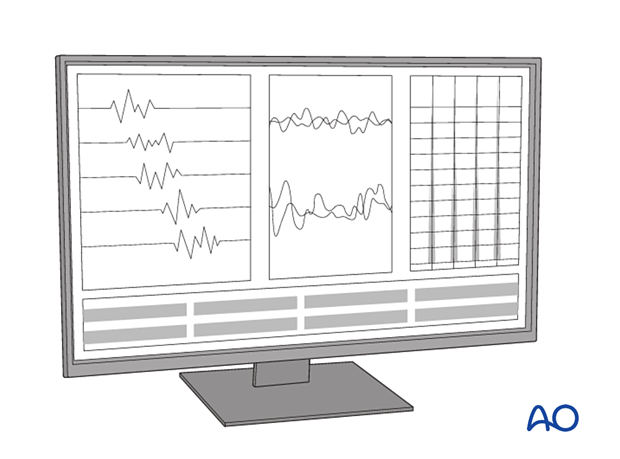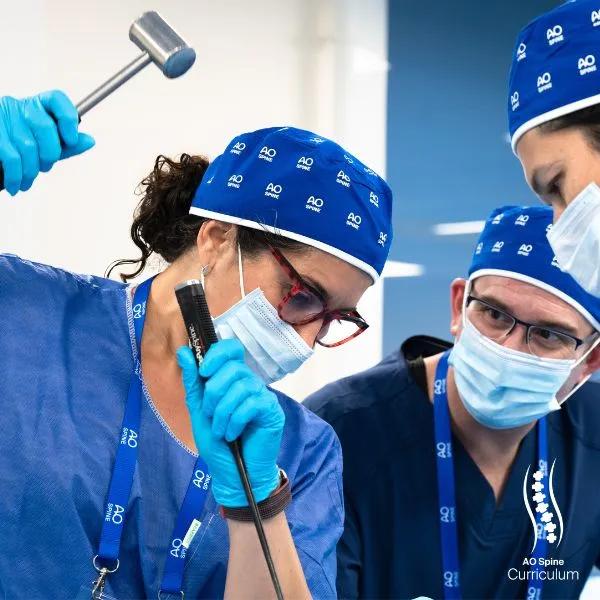Supine position
1. Positioning
The patient is placed onto a radiolucent table in a supine position.
The neck is put into slight hyperextension by placing a shoulder roll (bump) under the shoulders.
To prevent head rotation, a strap/tape can be applied from the forehead to both sides of the table.
An additional smaller neck roll (bump) can be placed under the neck to prevent the cervical spine from moving when the anterior spine is manipulated.
If lower cervical levels need to be seen in lateral imaging, adhesive straps are used to pull the shoulders downwards.
Some surgeons prefer to place the patient in a slight reverse Trendelenburg position to decrease the venous pressure at the surgical site.
A C-arm should be placed to allow for intraoperative fluoroscopy.

2. Traction
If traction is deemed necessary, a Mayfield clamp, Gardner-Wells tongs, or halo can be used.

3. Anesthesia
General anesthesia with endotracheal intubation is required.

4. Preoperative antibiotics
Antibiotics should be administered well prior to the incision and also at 2-hour intervals during the procedure.
A cephalosporin antibiotic with good Gram-positive coverage is generally recommended. Local bacterial spectrum will need to be taken into account; this should be discussed with the hospital microbiologist.
5. Spinal cord monitoring
Spinal cord monitoring can be useful.

6. Fluoroscopy
Fluoroscopy is essential. Preoperatively, it must be assured that the C-arm can be moved around the patient freely.













